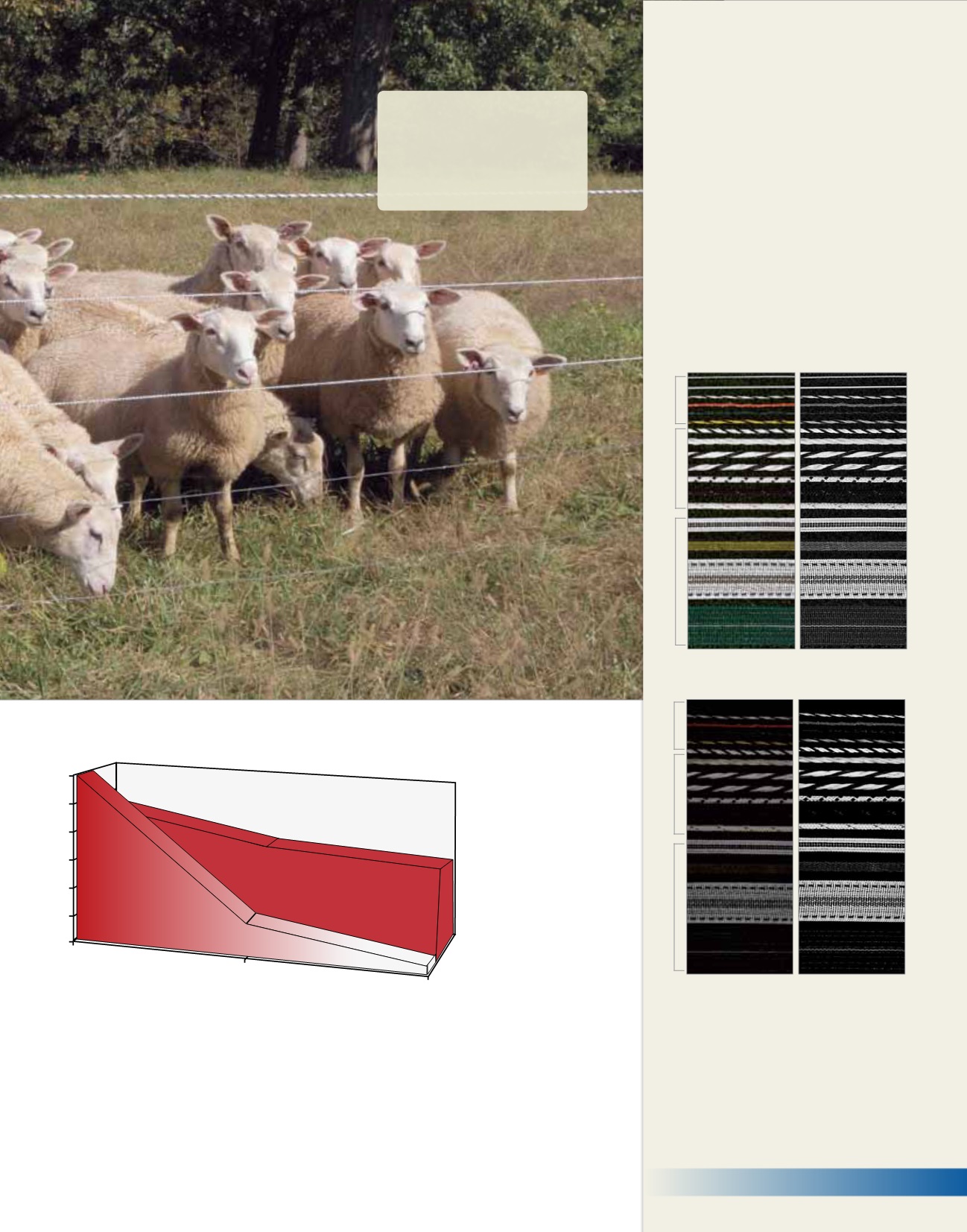
Polywire
(3350 ohms)
IntelliTwine
(50 ohms)
0.0
1.2
1.0
0.8
0.6
0.4
0.2
start of fence
middle of fence
end of fence
Joules @
2000
Tape
Rope Twine/Wire
Tape
Rope Twine/Wire
Direct sunlight
What humans see What animals see
At Night
What humans see What animals see
Which conductor is the
most visible?
Relative visibility to animals and
humans differs. And it’s critical. Why?
1. If it’s easy to see, it’s more likely to
stop livestock and wildlife.
2. Visibility = avoidance = safety for
both animals and humans.
But animals and humans differ in the
ability to see fences.
Many animals see
color poorly
.
Their world is largely black,
white and shades of gray.
But most have
better night vision than we do. (And
birds see much better than humans.)
These photos contain, in descending order,
MaxiShock, HT wire, IntelliTwine, polywire,
rope, braided rope, tape. They simulate both
direct sunlight and “nightlight.” To simulate
animal vision, we eliminated the color and
enhanced the amount of “light at night.”
Key conclusions:
• Size in diameter or width matters—larger
is always better for visibility.
• Contrast matters—black/white is much
more visible than solid white, green,
orange or black.
www.premier1supplies.com• 1-800-282-6631
CONDUCTORS 117
The resistance of
IntelliTwine is 50 ohms (Ω)
per 1500 ft.
Why? Because it
has both stainless steel and
tinned copper filaments.
The resistance of the
test polywire is 65 times
higher—3300 Ω per 1500 ft.
So its conductivity is 1/65 that
of IntelliTwine.
Why the difference?
Because it has only stainless
steel filaments in it.
As you can see in the graph above,
high conductivity (low ohms/ft or mile)
enables the pulse energy to remain high
all the way to the end of the fence.
The graph uses data from a test at
Premier. We installed 2 fences side by
side. Each was 1500 ft long. One fence
Conductor Options Rope/Braid............pp. 118–119 Twine.....................................119 MaxiShock.......................... 120 Tape...................................... 120Why conductivity (resistance) matters
Also refer to our conductor charts comparing conductivity on pp. 119–120.
used a good conductor (IntelliTwine).
The other fence used polywire with only
stainless steel filaments.
We allowed grass to grow and contact
the last 50% of each fence. We then
measured available joules (same energizer
and ground) at the points shown.









